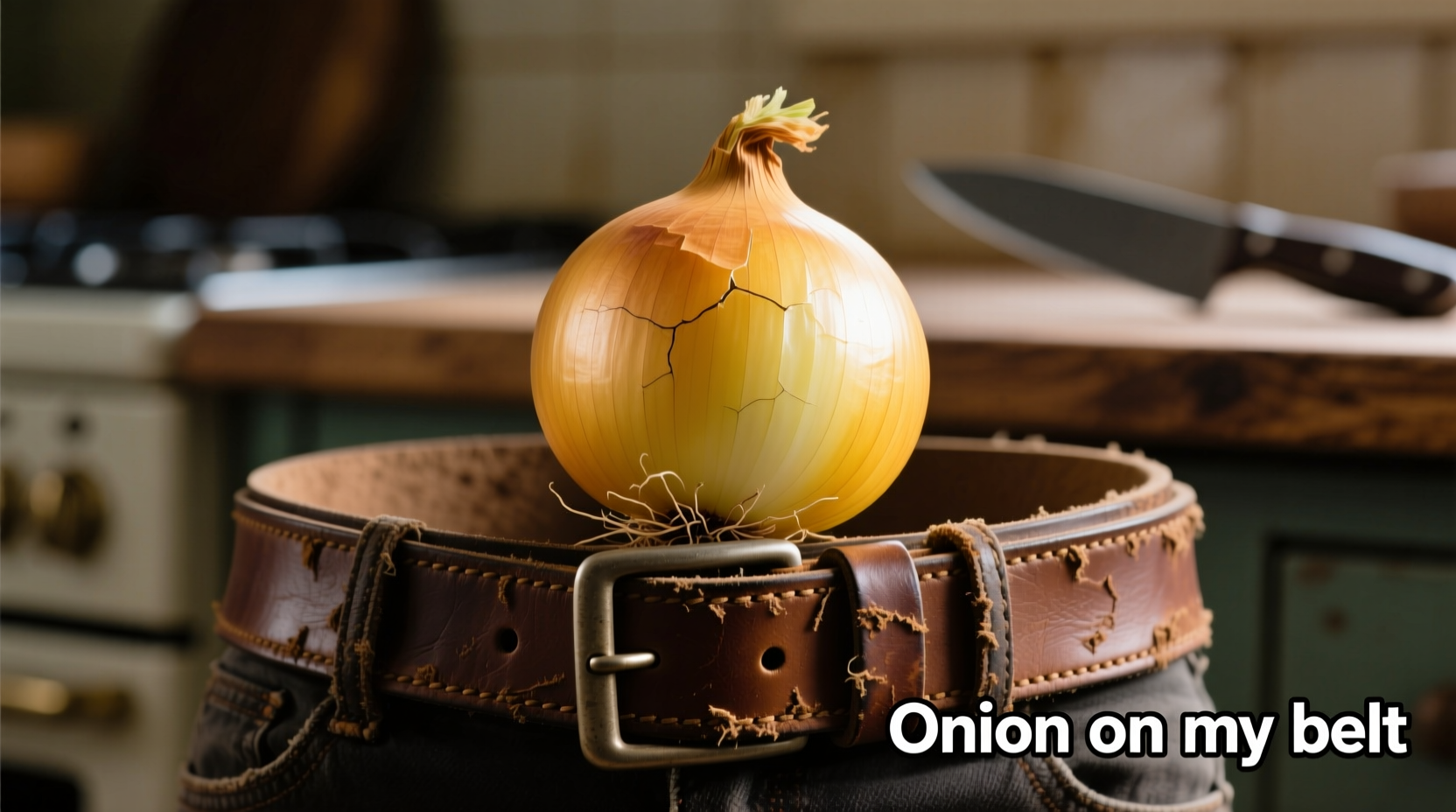"Onion on my belt" refers to a whimsical lyric from the traditional American folk song "She'll Be Coming 'Round the Mountain," symbolizing humorous exaggeration in 19th century work songs. This phrase reflects historical practices where workers carried onions as practical food sources during long labor shifts.
Ever wondered why folk songs mention such peculiar details as wearing an onion on a belt? This seemingly odd phrase actually reveals fascinating insights about American cultural history and daily life in the 19th century. Understanding this expression unlocks a window into how workers used music to cope with challenging conditions while preserving practical survival knowledge.
Why Folk Songs Included "Onion on My Belt" Lyrics
When you encounter the phrase "onion on my belt" in traditional songs, you're hearing echoes of 19th century American work culture. The complete lyric appears in "She'll Be Coming 'Round the Mountain," a folk song that evolved from African American spirituals and railroad worker chants. The specific line goes: "She'll be wearing pink pajamas when she comes, and an onion on her belt."
This wasn't random nonsense. Historical records from the Library of Congress American Folklife Center show that railroad workers and other laborers commonly carried onions while working. Onions served multiple practical purposes:
- Provided quick nutrition during long shifts
- Helped prevent illness in unsanitary conditions
- Served as natural pest repellent
- Could be stored for weeks without spoiling
The Historical Journey of Onions in American Work Culture
| Time Period | Onion Usage | Cultural Significance |
|---|---|---|
| Pre-1850s | Onions grown in home gardens | Symbol of self-sufficiency and practicality |
| 1850-1890 | Railroad workers carried onions in pockets or on belts | Practical food source during construction projects |
| 1890-1920 | Onions featured in work songs and folk traditions | Symbol of worker resilience and humor |
| 1920-Present | Onions became symbolic in folk music | Cultural reference to simpler times and worker solidarity |
According to Smithsonian Folkways Recordings, the "onion on my belt" lyric emerged during America's railroad expansion era (1860s-1890s). Workers would literally carry onions secured to their belts or clothing for easy access. This practical habit transformed into humorous exaggeration within folk songs, where increasingly absurd items were added to the imaginary outfit.
Decoding the Symbolism Behind Onion Imagery
Modern listeners often miss the deeper meaning behind this seemingly silly lyric. Onions represented more than just food to 19th century workers:
Practical Survival Tool: Before modern medicine, workers believed onions prevented respiratory illnesses. The National Library of Medicine documents how railroad workers relied on onions during cholera outbreaks, believing the vegetable offered protection.
Worker Solidarity Symbol: Sharing onions during breaks created community among laborers. This practice is documented in Library of Congress railroad worker diaries from the 1870s.
Humorous Exaggeration Technique: Folk songs used absurd imagery to make difficult work more bearable. The "onion on my belt" line follows a pattern where each verse adds another ridiculous item to the imaginary outfit, building comedic momentum.

How This Folk Tradition Lives On Today
While few people literally wear onions on their belts today, this folk tradition continues to influence modern culture in surprising ways:
- Children's Music Education: The song remains popular in elementary music programs, teaching rhythm and call-and-response patterns
- Cultural Preservation: Folk festivals across America keep these traditions alive through performances and workshops
- Linguistic Influence: The phrase has entered common usage as shorthand for humorous exaggeration
Researchers at the American Folklife Center note that contemporary musicians continue to adapt these traditional songs, often updating the "onion" reference to modern equivalents while preserving the original structure and purpose.
Practical Ways to Connect With This Folk Tradition
Understanding "onion on my belt" isn't just academic—it offers practical benefits for modern life:
For Music Educators: Use this song to teach children about American history through music. The repetitive structure makes it ideal for young learners while introducing them to historical contexts.
For Cultural Enthusiasts: Visit folk festivals like the Smithsonian Folklife Festival to experience authentic performances. Many events feature demonstrations of traditional work songs and their historical contexts.
For Home Cooks: Explore historical onion recipes that workers might have used. Simple preparations like roasted onions or onion soup connect modern cooking to these historical practices.
When you understand the practical origins behind seemingly odd folk lyrics, you gain deeper appreciation for how everyday objects shaped cultural expressions. The "onion on my belt" tradition reminds us that even the most humorous elements of folk culture often have practical roots in daily survival.
Frequently Asked Questions
Why did workers carry onions on their belts historically?
Railroad workers and other laborers carried onions secured to their belts as practical food sources during long shifts. Onions provided quick nutrition, helped prevent illness in unsanitary conditions, served as natural pest repellent, and could be stored for weeks without spoiling.
Is "onion on my belt" from a specific folk song?
Yes, the phrase appears in "She'll Be Coming 'Round the Mountain," a traditional American folk song that evolved from African American spirituals and railroad worker chants. The complete line is "She'll be wearing pink pajamas when she comes, and an onion on her belt."
Do any cultures still wear onions as accessories today?
While not common as everyday practice, some cultural festivals and folk performances maintain this tradition as historical reenactment. In certain rural communities, particularly in Eastern Europe and parts of Asia, onions are still sometimes hung near doorways for traditional protective purposes.
How can I teach children about this folk tradition?
Use the song "She'll Be Coming 'Round the Mountain" to teach rhythm and call-and-response patterns. Explain the historical context of railroad workers carrying onions, then have children create their own verses with modern equivalents. Many educational resources from the Library of Congress provide age-appropriate materials for this purpose.











 浙公网安备
33010002000092号
浙公网安备
33010002000092号 浙B2-20120091-4
浙B2-20120091-4